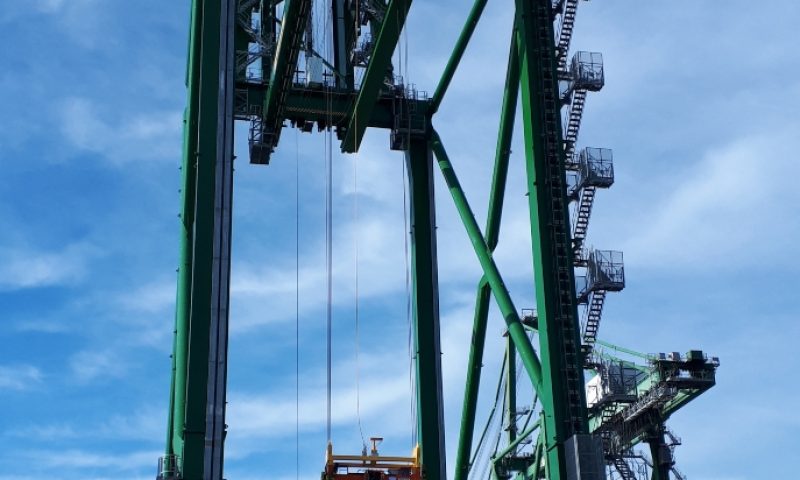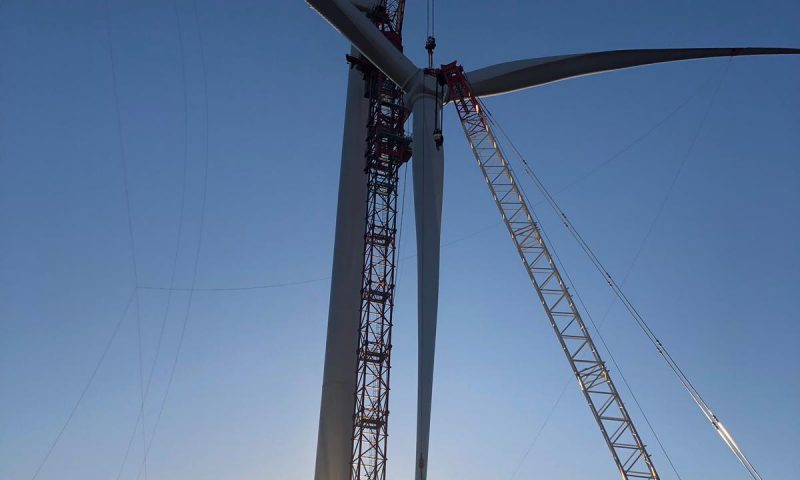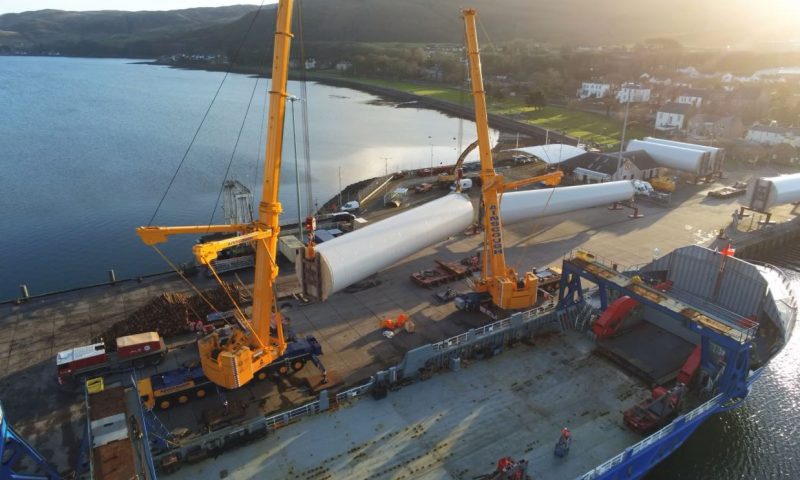
ALE Accomplished Efficient Crane Movement
The Port of Sines lies 150km south of Lisbon, processing over 50 million tonnes of cargo per year from more than 2000 vessels. Following an investment of over a billion Euros, its quay and handling equipment are being enhanced and expanded.
As part of this work, a new ship-to-shore crane was being built by steel construction experts URSSA. ALE’s experience in designing complex lifts and handling them safely, as well as their ability to mobilise quickly, made them well-suited for the project.
The crane was received from the client in a state of partial assembly: its boom had been preassembled at ground level, while its legs were upright. ALE was tasked with the jacking-up of the boom structure of the crane at its fabrication location, then skidding it to its final position on rails next to the quay edge.
The 910t boom structure was first lifted using a selection of strand jacks with 70t, 200t and 500t capacities, positioned atop the crane’s legs. Due to the boom’s 143m length, the lift operation required weeks of preparation for ALE’s engineers.
Thanks to this preparation, the boom was in position three weeks after ALE first set hands on the crane. All 16 strand jacks were then removed from their positions.
The next phase saw the team face further challenges, as the crane needed to be skidded 170m within a strict 20-hour time limit and take an amended route to stay within ground bearing pressure guidelines. This was crucial for the port’s handling operations. As a result, the first 75m of the skidding manoeuvre was diagonal, avoiding several underground galleries close to the crane’s rails. The skidding equipment drove a force of 255t push-pull jacking capacity.
The completed crane, weighing 1,425t and measuring 27.3m x 80m x 91m, was set onto rails over the course of a week.
The crane is now back in use, further expanding the cargo handling capabilities of the Port of Sines.














